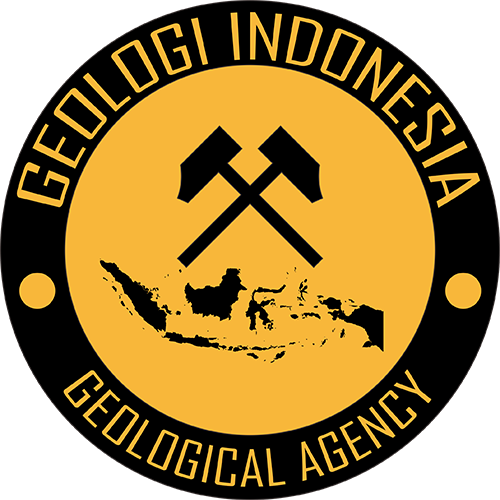Basin with Geology and Geophysics Data
Basin Status
Oceanic Basin
Tectonic Setting
0
Area (km2)
0
Visitor Count
0
Likes
Prospectivity & Resources
of
Obi Basin
Basin Capacity
Data based on
22 Nov 2024
Oil
N/A
MMBO
(Million Barrels of Oil)
Gas
N/A
TCF
(Trillion Cubic Feet)
Resources
Data based on
22 Nov 2024
Oil
Conventional N/A
Conventional N/A
MMBO
(Million Barrels of Oil)
Gas
Conventional N/A
Conventional N/A
TCF
(Trillion Cubic Feet)
Oil
Unconventional N/A
Unconventional N/A
MMBO
(Million Barrels of Oil)
Gas
Unconventional N/A
Unconventional N/A
TCF
(Trillion Cubic Feet)
Executive Summary
of
Obi Basin
Description
Version
1
Published Date
20 Jan 2023
Uploaded Date
12 Apr 2023
Photos
Some footage of Obi Basin
Introduction
Preliminary details of Obi Basin
Data based on:
20 Jan 2023
Exploration History
Detailed history of Obi Basin
Data based on:
20 Jan 2023
Regional Geology
Detailed regional geology of Obi Basin
Regionally, the geology of the Obi Basin, which borders Obi Island and its surroundings in the south, is the Sorong–Sula fault and the Sorong–Maluku fault in the north. Normal faults are generally a tectonic touch between ultramafic rocks and younger rock units. The faults trend west-east, northwest-southeast and northeast-southwest. Karu Lake in the west of Obi Island is thought to be a big subsidence bounded by two faults trending north-south. Folds are well developed in Tertiary sedimentary rocks, trending northwest-southeast, west-east and north-south. The alignment is northwest-southeast and southwest-northeast trend. Tectonic activity is thought to have started before the Jurassic marked by the appearance of ultramafic and metamorphic rocks. The next tectonic occurred in the Jurassic, which was submergence followed by deposition of sediments from the Loleobasso formation. From the Cretaceous to the Eocene there was uplift and conversion of sediments from the Loleobasso formation. In the Oligocene – Miocene there was another sinking followed by the deposition of the Fluk and Bacan formations, then uplifting followed by volcanic activity, intruded of diorite and gabbro which resulted in the formations of Woi, Obit and Anggai. This fluctuation has continued until now as indicated by the formation of coastal steps and the growth of reef limestone accompanied by volcanic activity. The gravity data used in this study are regional gravity data obtained in 2005 and have been published in the Bacan and Obi gravity anomaly maps. The gravity anomaly contours in the study area range from 58 to 210 mgal, based on the anomaly values obtained in two anomaly areas, namely the low anomaly area. The basin anomaly that occupies the northern part of Obi Island, continues and has a northwest-southeast direction which is a straight line from the direction of the Sorong Fault, which separates the anomaly ridge in the southwest and northeast. The correlation with the high mass density of the gravity anomaly which reaches 200 mgal indicates the thinning of the sediment layer and the presence of intrusion from magmatism activity and basement rocks from the oceanic crust. Based on the contour pattern of the gravity anomaly, the straightness, curvature and settlement of the anomaly are obtained. The anomaly lineament pattern is a geological alignment between Bacan Island in the north and Obi Island in the south, which forms a northwest – southeast gravity anomaly basin. The sub-basin separates two anomalous ridges on Bacan Island and Obi Island. The gravity anomaly ridge in the central part of Obi Island and the southeastern part of Bacan Island which is composed of volcanic rock and the higher anomalous ridge in the northwestern part of Bacan Island which is composed of basement rock from oceanic crust which is rich in mineralization. In order to obtain an overview of the shallow geological structure, an anomaly separation was carried out, which indicated the existence of a shallow structure forming a sub-basin, and a second vertical derivative process was also carried out to obtain the shape of the depocenter. The sub-basin occupies the northern and southern parts of Obi Island, another sub-basin is located on Bacan Island, which is bounded by anomalous elevations originating from ultrabasic rocks.
Data based on:
20 Jan 2023
Petroleum System
Detailed petroleum system of Obi Basin
From the map it is clear that the sediment is thickening to the northern part. The potential candidate for gas-carrying rock is Woi Formation which has a good TOC value but does not indicate maturity, while the potential candidate for reservoir rock is the middle and upper Woi Formation and the Anggai Formation. The location of the Obi basin's oil and gas potential around the Wayaloar River, South Obi is based on the residual gravity anomaly depositor.The lower Woi Formation has potential as a source rock. The lower Woi Formation was probably deposited in a shallow marine area, generally having a stroke pattern ranging from northeast to southwest with a slope ranging from the southeast with a slightly gentle slope.The TOC analysis results are generally categorized as bad, except for rock sample 17 PE 19 which has a value of 1.21 wt% which is categorized as good. HI (Hydrogen Index) value per rock sample is composed of kerogen with type III. Determination of the quality of source rock can also be known from plotting the HI vs Tmax and S2 vs TOC diagrams which also show the type of gas-producing kerogen. The Tmax value indicates the level of immature, mature and overmature.The reservoir rock potential for the Tertiary petroleum system of the Woi Formation is the middle and upper Woi Formation and the Anggai Formation. The middle and upper Woi Formation was probably deposited in shallow marine areas up to the shelf, generally having an east-southwest trending pattern with a slightly oblique slope to the southeast.Porosity analysis of the Woi Formation has a value of 26.67% - 22.12%. Based on the porosity test value, the reservoir rock potential is good. Porosity analysis has values ranging from 2.73% -26.76%. Based on the porosity test value, the reservoir rock potential is categorized as good
Data based on:
20 Jan 2023
Resources
Detailed resources of Obi Basin
Data based on:
20 Jan 2023
Petroleum System Chart
of
Obi Basin
Description
Version
-
Published Date
-
Uploaded Date
-
Petroleum System Chart
Petroleum system chart to Obi Basin
Montage
of
Obi Basin
Description
Version
1
Published Date
13 Jun 2023
Uploaded Date
13 Jun 2023
Montage
Detailed montage of Obi Basin
Reports & Publications
of
Obi Basin
Description
Version
1
Published Date
-
Uploaded Date
20 Jul 2023
Reports & Publications PDF
The PDF displayed is only pages 1 to 20. For a complete PDF, you can download it by clicking the download button.
Archives of Report & Publication
| Date | Report Description | Version | Doc | |
| 01 Nov 2018 | Rekomendasi Wilayah Keprospekan Migas Obi | 1 | Download PDF |
| Date | Publication Description | Version | Doc | |
| Oct 04, 2022 | Jurnal Cekungan Obi Tahun 2022 | 1.0 | Download | |
| Oct 07, 2021 | Jurnal Cekungan Obi Tahun 2021 | 2.0 | Download | |
| Oct 03, 2020 | Jurnal Cekungan Obi Tahun 2020 | 2.0 | Download | |
| Oct 01, 2019 | Jurnal Cekungan Obi Tahun 2019 | 2.0 | Download | |
| Oct 07, 2018 | Jurnal Cekungan Obi Tahun 2018 | 2.0 | Download | |
| Oct 02, 2017 | Jurnal Cekungan Obi Tahun 2017 | 2.0 | Download | |
| Oct 07, 2016 | Jurnal Cekungan Obi Tahun 2016 | 2.0 | Download | |
| Oct 04, 2015 | Jurnal Cekungan Obi Tahun 2015 | 2.0 | Download | |
| Oct 05, 2014 | Jurnal Cekungan Obi Tahun 2014 | 2.0 | Download | |
| Oct 07, 2013 | Jurnal Cekungan Obi Tahun 2013 | 2.0 | Download | |
| Oct 08, 2012 | Jurnal Cekungan Obi Tahun 2012 | 1.0 | Download |


